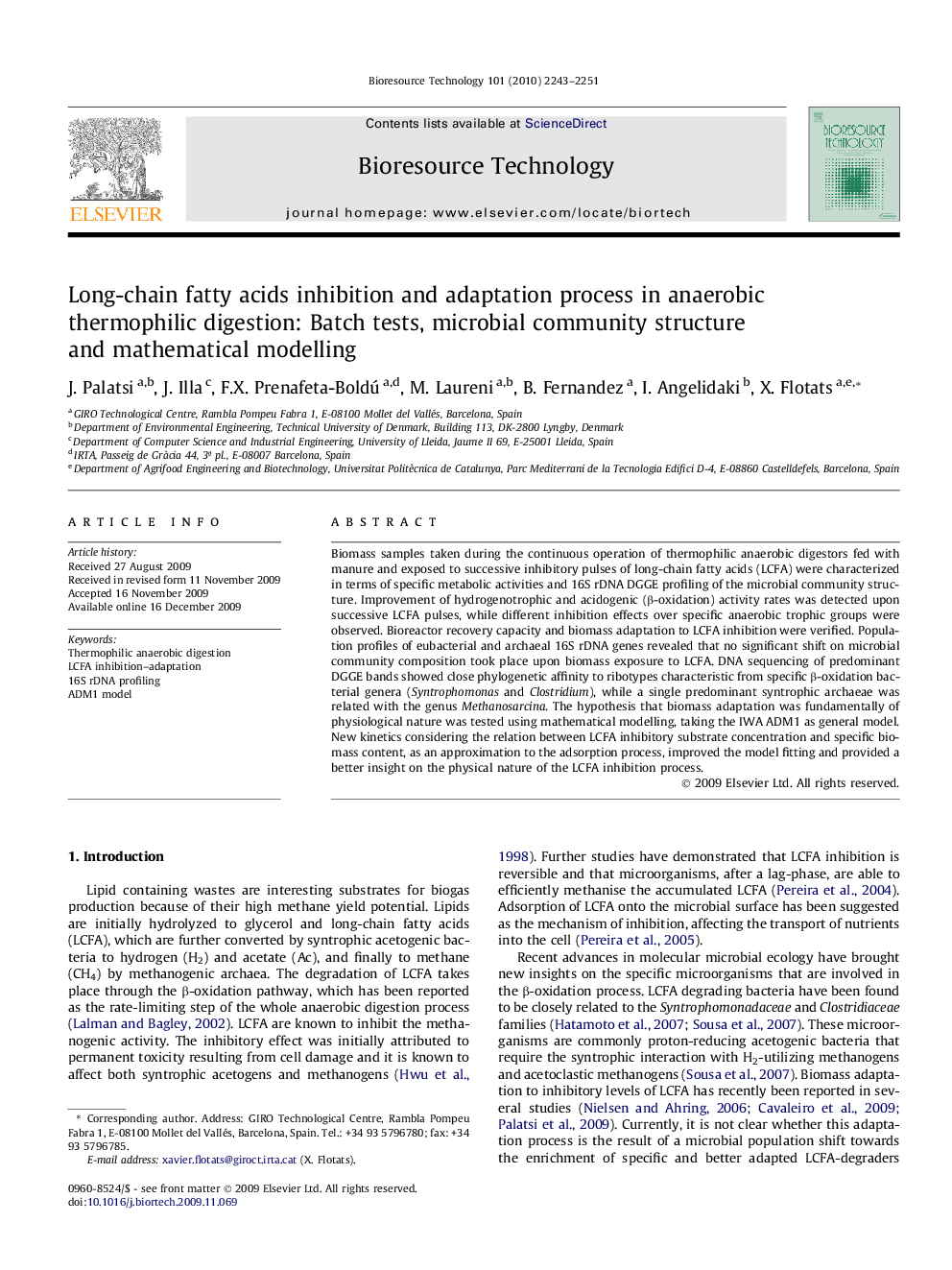| Article ID | Journal | Published Year | Pages | File Type |
|---|---|---|---|---|
| 683852 | Bioresource Technology | 2010 | 9 Pages |
Biomass samples taken during the continuous operation of thermophilic anaerobic digestors fed with manure and exposed to successive inhibitory pulses of long-chain fatty acids (LCFA) were characterized in terms of specific metabolic activities and 16S rDNA DGGE profiling of the microbial community structure. Improvement of hydrogenotrophic and acidogenic (β-oxidation) activity rates was detected upon successive LCFA pulses, while different inhibition effects over specific anaerobic trophic groups were observed. Bioreactor recovery capacity and biomass adaptation to LCFA inhibition were verified. Population profiles of eubacterial and archaeal 16S rDNA genes revealed that no significant shift on microbial community composition took place upon biomass exposure to LCFA. DNA sequencing of predominant DGGE bands showed close phylogenetic affinity to ribotypes characteristic from specific β-oxidation bacterial genera (Syntrophomonas and Clostridium), while a single predominant syntrophic archaeae was related with the genus Methanosarcina. The hypothesis that biomass adaptation was fundamentally of physiological nature was tested using mathematical modelling, taking the IWA ADM1 as general model. New kinetics considering the relation between LCFA inhibitory substrate concentration and specific biomass content, as an approximation to the adsorption process, improved the model fitting and provided a better insight on the physical nature of the LCFA inhibition process.
